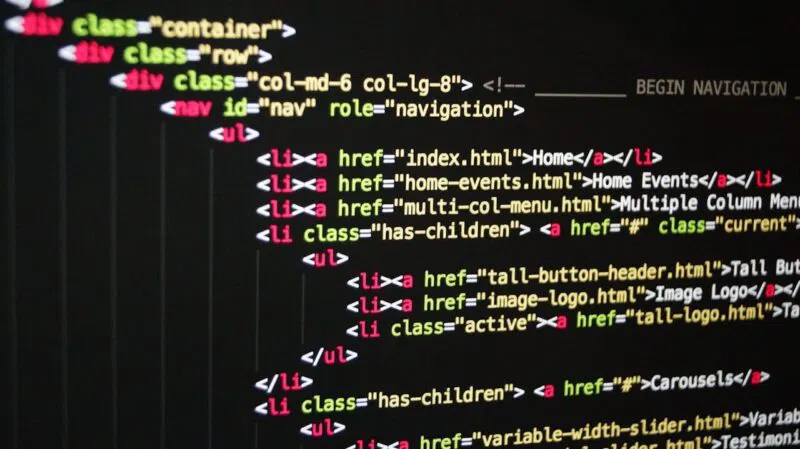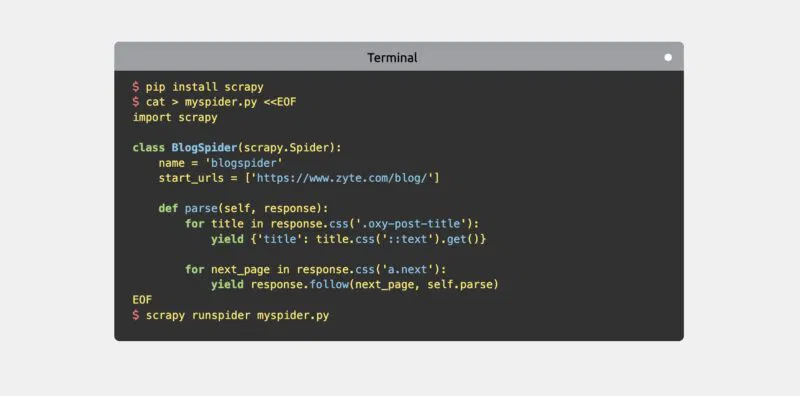What is AI Web Scraping?
Have you ever needed to extract public data, such as prices, customer reviews or real estate listings, from a website but encountered difficulty?
AI Web Scraping is an advanced method for data extraction that combines the power of artificial intelligence with traditional web scraping techniques. AI Web Scraping is like giving a regular web crawler a brain upgrade: Allowing it to think, learn, and adapt on its own.
Because AI Web Scraping can come in so many forms, one application can look completely different from another. Furthermore, AI technology is still developing at a breakneck pace, so what is not possible today may be possible in just a few months.
Is AI Web Scraping legal?
The article does not provide legal advice, and the law relating to web scraping can vary widely between countries and jurisdictions, so always consult a legal professional for advice. Specific advice for your situation.
Web scraping, whether AI-enhanced or not, is generally legal if you are collecting publicly available data from the Internet. The key word here is "public". If the information is freely accessible without requiring login credentials or bypassing security measures, it is usually legal.

To be on the safer side, you should always consider the terms of service of the website you want to extract. Many websites explicitly prohibit ripping in their terms of service. Although violating these terms is not necessarily illegal, it could potentially result in civil lawsuits.
Also, be careful never to overload the web service when doing scraping. Excessive data extraction that overloads a website's servers can be considered a form of denial of service (DoS) attack and has legal consequences.
How is AI Web Scraping different from manual data extraction?
Traditional web data extraction often involves writing custom scripts or using tools like Beautiful Soup, Scrapy, or Puppeteer to extract data from web pages. These methods rely on predefined rules and patterns to locate and extract specific elements from a web page.

Once collected, data often needs additional processing and analysis, which may involve the use of spreadsheet software or data analysis tools such as Python's Pandas library.
When these traditional web data extraction techniques are combined with AI, we have AI Web Scraping. Here are some examples of what this combination might look like in practice:
- Machine Learning models can be used to navigate complex websites and handle dynamic content and pages rendered using JavaScript with ease.
- AI's vision capabilities make it possible for data extractors to extract data from visual content, not just text.
- AI can detect and adapt to changes in site structure and reduce the need for ongoing maintenance of data extraction scripts.
- Relevant information can be extracted from the text based on a complex understanding of the context and semantics of the extracted text.
- Product reviews or social media comments can be fed into AI to perform sentiment analysis, assessing the emotional tone of text data.
As you can see, AI can be involved in both the data collection and analysis stages of the web scraping process. At the data collection stage, AI enhances the data extractor's ability to navigate websites, identify relevant data, and adapt to real-time changes. At the data analysis stage, AI can process and interpret collected data in ways that go beyond simple extraction.
What are the main benefits of AI Scraping?
Crawling web data using AI brings many benefits. Let's take a closer look at some of the most important benefits.
Ability to adapt to site changes
Websites are constantly evolving, which can disrupt traditional data collection tools. AI-powered tools can adapt to these changes instantly by recognizing new patterns and adjusting their data collection strategies accordingly. This means less downtime and maintenance for data collection efforts.

Vision-based data analytics
Traditional data collection tools are limited to textual information, but AI can extract valuable insights from images, charts, and infographics. This opens up a whole new dimension of data that was previously inaccessible. For example, AI can analyze product photos to determine features, colors, and styles, which is extremely useful for e-commerce competitors tracking trends.
Natural language processing
AI can understand the context and meaning of collected text data. As mentioned earlier, companies can use sentiment analysis to gauge customer satisfaction from collected reviews or can summarize large volumes of text, translating content from foreign markets, etc.
You should read it
- Bloatware list can be uninstalled or safely deleted from Android device synthesized by Androidsage
- Mimicking human behavior, the hero dog saves earthworms from the hot road surface
- How to save and send Viber messages to email
- How to sharpen images in Photoshop in 2 ways
- Instructions for using extension share (sharing) on iPhone and iPad
- Experience MSI's two-screen netbook
- Move DHCP from 2000 Server / Server 2003 to Server 2008
- Kaspersky 'slipped' anti-spam test
May be interested
- How to use GoChat application in Pokémon GO
 pokémon go has become a very hot phenomenon since its debut. any information or tricks related to the game are read and applied by players during the process of catching pokémon. and the gochat chat app for pokémon go players brings space to capture pokémon much more interesting.
pokémon go has become a very hot phenomenon since its debut. any information or tricks related to the game are read and applied by players during the process of catching pokémon. and the gochat chat app for pokémon go players brings space to capture pokémon much more interesting. - How to play Pokemon GO in Landscape Mode on the iPhone
 although players can play pokemon go in portrait mode. however, if you want to watch and play games on a large and eye-catching screen, players can switch to playing games in landscape mode.
although players can play pokemon go in portrait mode. however, if you want to watch and play games on a large and eye-catching screen, players can switch to playing games in landscape mode. - The secret to controlling Pokemon Go employees at work
 these days, hr managers are faced with an extremely painful problem that is the status of priority employees playing pokemon go more than work. this has caused a small impact on productivity and efficiency.
these days, hr managers are faced with an extremely painful problem that is the status of priority employees playing pokemon go more than work. this has caused a small impact on productivity and efficiency. - Check out the 'buffalo' Pokémon in Pokémon Go
 each type of pokemon has hp, cp, ability to attack and endure differently. based on these indicators, players can determine as well as choosing the most powerful pokemon for their offensive tactics.
each type of pokemon has hp, cp, ability to attack and endure differently. based on these indicators, players can determine as well as choosing the most powerful pokemon for their offensive tactics. - Sitting home can also locate Pokemon around, do you believe it?
 the tightening of the niantic developers' rules to prevent players from abusing the support tools also brings annoyance, such as those who have no conditions to move much, go away, it is hard to know. get the location of the pokemon around the area they live in
the tightening of the niantic developers' rules to prevent players from abusing the support tools also brings annoyance, such as those who have no conditions to move much, go away, it is hard to know. get the location of the pokemon around the area they live in - 5 undeniable benefits when playing Pokemon Go
 get to know many new people, breathe fresh air, relieve stress, increase concentration thanks to going out for a walk .... are compelling reasons to force you to try pokemon go now .
get to know many new people, breathe fresh air, relieve stress, increase concentration thanks to going out for a walk .... are compelling reasons to force you to try pokemon go now . - Want to earn the fastest Pokécoins in Pokémon Go? So don't miss this article!
 pokécoins in pokémon go play the role of buying items in the store. the more coins you earn, the more likely you are to buy more items. to earn pokécoins, players will have to complete certain tasks or buy real money.
pokécoins in pokémon go play the role of buying items in the store. the more coins you earn, the more likely you are to buy more items. to earn pokécoins, players will have to complete certain tasks or buy real money. - Pokémon systems when fighting in Pokémon Go
 each pokémon system in pokémon go has different strengths, along with a specific weakness. this type of pokémon will have the power to attack the other pokémon, but can defeat the other pokémon. if you know the characteristics of each type, it will be easier to choose which pokémon to battle.
each pokémon system in pokémon go has different strengths, along with a specific weakness. this type of pokémon will have the power to attack the other pokémon, but can defeat the other pokémon. if you know the characteristics of each type, it will be easier to choose which pokémon to battle. - The terms you need to know when playing Pokémon Go
 pokémon go is the most prominent name in recent days. this game of capturing and training virtual animals has created a relatively new way of playing, as players have to constantly move to catch pokémon. during the process of joining pokémon go, you will encounter and use a lot of important terms. so what do they mean?
pokémon go is the most prominent name in recent days. this game of capturing and training virtual animals has created a relatively new way of playing, as players have to constantly move to catch pokémon. during the process of joining pokémon go, you will encounter and use a lot of important terms. so what do they mean? - How to play Pokemon GO on Windows computers
 recently, pokemon go has become a popular game, attracting thousands of gamers around the world. in previous posts network administrator has guided you on how to play pokemon go on android devices and ios devices. in the article below, network administrator will guide you how to play pokemon go on windows computers using bluestacks emulator software.
recently, pokemon go has become a popular game, attracting thousands of gamers around the world. in previous posts network administrator has guided you on how to play pokemon go on android devices and ios devices. in the article below, network administrator will guide you how to play pokemon go on windows computers using bluestacks emulator software.










 4 favorite photo editing apps that don't abuse AI features
4 favorite photo editing apps that don't abuse AI features 9 important things to consider when buying a mouse
9 important things to consider when buying a mouse What is extortionware? How is it different from Ransomware?
What is extortionware? How is it different from Ransomware? The Hubble Telescope discovered a pair of small dwarf galaxies containing many interesting features
The Hubble Telescope discovered a pair of small dwarf galaxies containing many interesting features How to return to the old interface on Canva
How to return to the old interface on Canva USB flash drives can store data for 200 years
USB flash drives can store data for 200 years